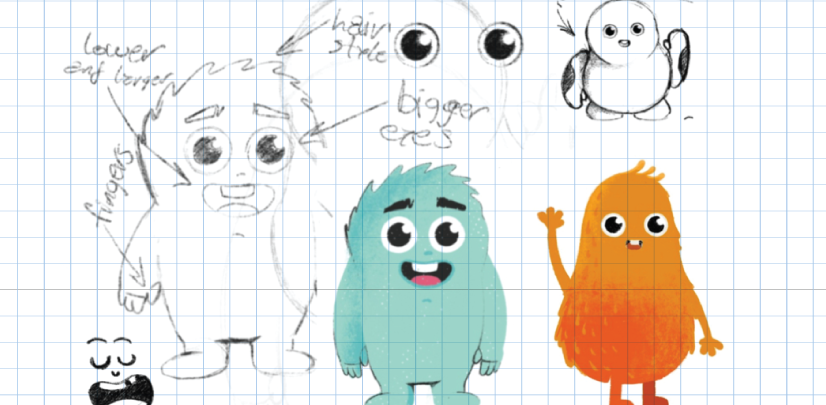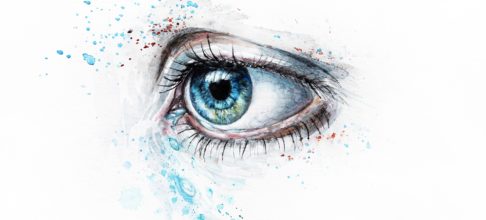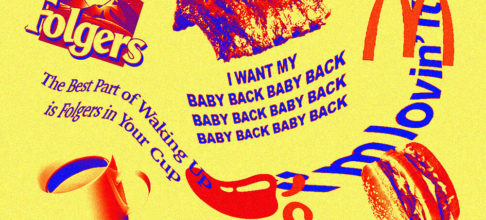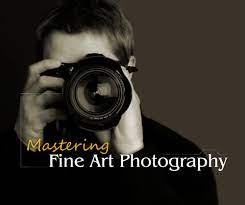Unlock the Secrets to Writing Powerful Characters for Visual Storytelling
Are you an aspiring storyteller looking to craft compelling characters? Are you an experienced writer looking to add more depth to your stories? If so, then you won't want to miss out on this amazing opportunity to learn the secrets to writing powerful characters for visual storytelling.
At KennFlik, we provide a comprehensive course that will teach you the techniques to create characters will captivate your. Our expert instructors will you how to craft that are complex, believable and full of life.'ll learn how to develop personalities, how to create a compelling backstory, and how to use dialogue to bring them to life.
By the end of the course, you'll have the tools to create characters that drive your story forward and keep your audience engaged So don't wait any - unlock the secrets to powerful characters for visual storytelling today!
Are you looking for ways to create powerful characters for your visual storytelling? Unlock the secrets to writing powerful characters with this guide! Learn how to craft characters that your audience will connect with and remember. With the right techniques, you can create characters that drive your story forward and engage your viewers. Get the tips and tricks you need to create characters that will captivate your and keep them coming back more. Unlock the secrets writing powerful for visual storytelling today!
Crafting Compelling Character Arcs for Visual Storytelling
Crafting compelling character arcs for visual storytelling is a critical part of any successful story. Character arcs are the journey that a character takes throughout the story, and they are essential for creating an engaging and emotionally resonant narrative.
A compelling character arc is one that is well-developed and meaningful. It should take the character on a journey that is both emotionally and psychologically engaging. The character should experience a range of emotions and challenges, and should ultimately be changed by the end of the story.
When crafting a character arc, it is important to consider the character’s backstory, motivations, and goals. This will help to create a more complex and believable character. It is also important to consider the character’s relationships with other characters in the story. This will help to create a more dynamic and engaging narrative.
Visual storytelling is an effective way to communicate a character’s arc. Visuals can be used to illustrate the character’s journey and to convey the emotional and psychological changes that the character experiences. Visuals can also be used to show the character’s relationships with other characters in the story.
When crafting a character arc for visual storytelling, it is important to consider the visuals that will be used to tell the story. This includes the type of visuals that will be used, the pacing of the visuals, and the order in which they will be presented. It is also important to consider how the visuals will interact with the dialogue and narration to create a cohesive and engaging story.
Crafting compelling character arcs for visual storytelling is an essential part of any successful story. It is important to consider the character’s backstory, motivations, and goals, as well as the visuals that will be used to tell the story. By taking time to craft a meaningful engaging character arc, you can create a story that is both emotionally and psychologically resonant.
Crafting a Unique Voice for Your Visual Storytelling Characters
Visual storytelling is a powerful tool for conveying a message and engaging an audience. It can be used to create stories that are both entertaining and meaningful. However, in order for a visual story to be successful, it is important to craft a unique voice for the characters. This voice should be distinct and memorable, and it should be tailored to the specific story being told.
Creating a unique voice for a character starts with understanding the character’s personality and motivations. It is important to consider the character’s background, interests, and goals in order to create a voice that is consistent and believable. It is also important to consider the character’s age, gender, and culture, as these factors can influence the way the character speaks and behaves.
Once the character’s personality is established, it is important to craft a unique voice that is consistent with the character’s personality. This can be done by choosing specific words and phrases that the character would use, as well as the tone and inflection of the character’s voice. It is also important to consider the character’s body language and facial expressions, as these can help to further define the character’s voice.
In addition to crafting a unique voice for the character, it is also important to consider the context of the story. The character’s voice should be tailored to the specific setting and situation in order to create a believable and engaging story. For example, a character’s voice may be more formal in a professional setting, while it may be more casual in a more relaxed setting.
By crafting a unique voice for a character, it is possible to create a memorable and engaging visual story. A unique voice can help to make the character more relatable and believable, and it can help to bring the story to life. It is important to take the time to craft a unique voice for each character in order to create a story that resonates with the audience.
Establishing a Character's Motivation and Conflict in Visual Storytelling
Visual storytelling is an incredibly powerful tool for creating compelling characters and narratives. It can be used to establish a character’s motivation and conflict in a way that words alone cannot. By combining visuals with words, visual storytelling can create a more immersive experience for the audience, allowing them to connect with the characters on a deeper level.
The key to establishing a character’s motivation and conflict through visual storytelling is to focus on the character’s journey. This means that the visuals should be used to illustrate the character’s journey, rather than simply telling the story. Visuals can be used to show the character’s goals, struggles, and successes. This helps to create a more powerful emotional connection between the audience and the character.
In addition to showing the character’s journey, visuals can also be used to create tension and conflict. This can be by showing the obstacles that the character must overcome in order to reach their goals. This helps to create a sense of suspense and excitement, as the audience is left wondering if the character will be able to overcome the obstacles.
Finally, visuals can be used to show the character’s emotional state. This can be done by showing the character’s facial expressions, body language, and even the environment they are in. This helps to create a deeper understanding of the character’s motivations and feelings, allowing the audience to empathize with them.
By combining visuals with words, visual storytelling can be used to create powerful and compelling characters and narratives. It can be used to establish a character’s motivation and conflict in way that words alone cannot. By focusing on the character’s journey, creating tension and conflict, and showing the character’s emotional state, visual storytelling can create a more immersive experience for the audience, allowing them to connect with the characters on a deeper level.
Creating Believable Character Relationships in Visual Storytelling
Creating believable character relationships in visual storytelling is essential for creating an engaging story. When characters have meaningful relationships, it gives the audience an emotional connection to the story. It also allows the audience to relate to the characters and understand their motivations.
When creating believable character relationships, it is important to consider the characters’ personalities, backgrounds, and motivations. Characters should have different and motivations that clash and each other. This will tension and, which will make the story interesting. Additionally, characters should have a history together informs their current relationship. will make the relationship more and relatable.
The visuals used to portray the relationships between characters should be carefully considered. Visuals be used to show the characters’ emotions and reactions to each other. For example, if two characters are arguing, the visuals should show the tension between them. This will help the audience understand the characters’ feelings and make the relationship more believable.
It is also important to consider the pacing of the story when creating believable character relationships. The relationships should develop gradually, with each character’s motivations and feelings becoming clearer as the story progresses. This will make the relationships more believable and engaging.
Creating believable character relationships in visual storytelling is an important part of creating an engaging story. By considering the characters’ personalities, backgrounds, and motivations, as well as the visuals used to portray the relationships, the audience will be able to relate to the characters and understand their motivations. Additionally, the pacing of the story should be carefully considered to ensure that the relationships develop gradually and believably. With these tips, visual storytellers can create believable and engaging character relationships.
Developing a Character's Backstory for Visual Storytelling
Developing a character’s backstory for visual storytelling is an essential part of the creative process. It’s a crucial step in creating a believable and compelling narrative, and it can help you create a unique and engaging story.
Backstory is the history of a character, the events that have shaped them and their motivations. It’s the story behind the story, and it’s an important part of creating a believable and engaging character. By creating a detailed backstory, you can create a more complex and interesting character, one that viewers can relate to and root for.
When creating a backstory, it’s important to think about the character’s past, their motivations, and their relationships. Think about the events that have shaped the character’s life, and how those events have impacted their decisions and their relationships. Consider their family, their friends, and their enemies. Think about the events that have led them to the point where the story begins.
It’s also important to think about the character’s goals and motivations. What do they want to achieve? What drives them? What are their fears and doubts? What are their hopes and dreams? These questions can help you create a more nuanced and interesting character.
Finally, consider the character’s relationships. How do they interact with other characters? What do they think of them? How do they feel about them? These relationships can be a great way to add depth and complexity to your character.
Creating a detailed backstory for your character is an essential part of visual storytelling. It can help you create a more believable and engaging character, one that viewers can relate to and root for. By taking the time to create a detailed backstory, you can create a more complex and interesting character, one that viewers will remember and care about.
In conclusion, Unlock the Secrets to Writing Powerful Characters for Visual Storytelling is an invaluable resource for anyone looking to create engaging characters for their visual stories. By learning how to craft compelling characters, you can make your stories more impactful and memorable. Unlock the Secrets to Writing Powerful Characters for Visual Storytelling provides the tools and techniques you need to create characters that will captivate your audience and bring your stories to life. Unlock the secrets today and start creating powerful characters for your visual stories!
Excerpt
Creating compelling characters is essential for visual storytelling. Unlock the secrets to writing powerful characters and bring your stories to life. With the right techniques, you can craft characters that will draw your audience in and keep them hooked.











